A building project – at any age – is not for the fainthearted. Luckily, 87-year-old Anne Hughes is not afraid of change, so when her four-bedroom Templeogue home stopped suiting her and husband Micheál, she took action. The result is a granny flat that's less old-age pensioner and more about bright, modern living.
“There’s nothing ‘granny’ about it,” says Anne, of the stylish two-bed home built onto the side of their house. The rejig of their living arrangements has brought easeful ground-floor living, and installed her son and his family as neighbours.
The move has come at a time that suits Anne.
“If someone told me when I was 70 to move, I’d have been insulted beyond words. I was at the height of my powers at 70,” says Anne. “Maybe even when I was 80, if someone said, ‘Anne, maybe you should be thinking of downsizing,’ I would have been saying, ‘What do you mean?’”
However, when Micheál had a stroke five years ago, their needs changed.
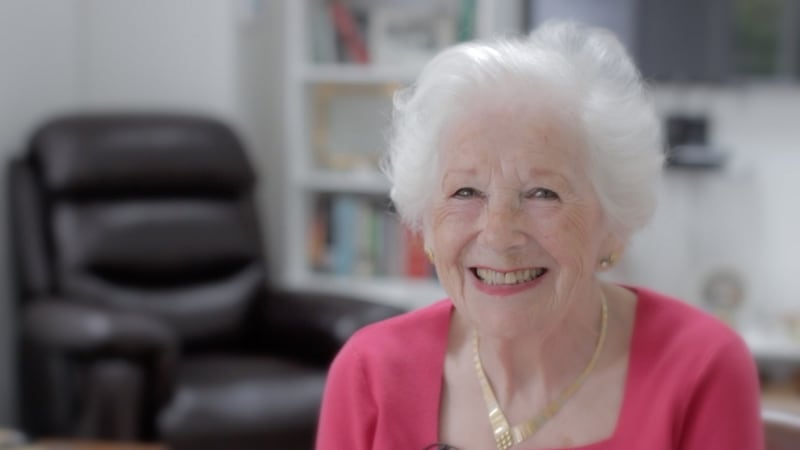

“Micheál is paralysed down one side. He was up and down the stairs and the stairs were a killer,” she says. “He had a few falls and it meant our son Howard would have to come from Lucan to lift him because I couldn’t,” she says. “I’d have nearly lived in a tent so that we could be on the level. We thought, oh my God, maybe we should think of doing something.”
An open conversation with her son got the ball rolling.
'I love working with older people. I make sure the process is not overwhelming and that they can put their personality on their home'
"We had to ask them first if they would agree to move, because it's a big upheaval. And they agreed," says Anne. The Templeogue house occupied a generous corner plot and the idea of a self-contained flat to the side with its own front door was conceived. After interviewing a number of builders, Anne hired Lee Ryan of Leixlip-based Grannyflats.ie.
Some 85 per cent of people over the age of 65 own their homes. A 2016 survey by the Government Housing Agency found that two thirds of them want to live there for as long as possible. Specialising in working with older people, Ryan says her clients' priorities are ground-floor living, warmth, light, a good-sized bathroom, "and to be listened to".
“I love working with older people,” says Ryan. “I make sure the process is not overwhelming and that they can put their personality on their home,” she says. Some 80 per cent of her clients opt for a 40sqm one-bed flat, which costs about €82,000 (ex VAT). This includes everything from groundworks to kitchen cabinetry, bathroom, flooring and painting. Regulations vary by county council but this size tends to get permission easily.
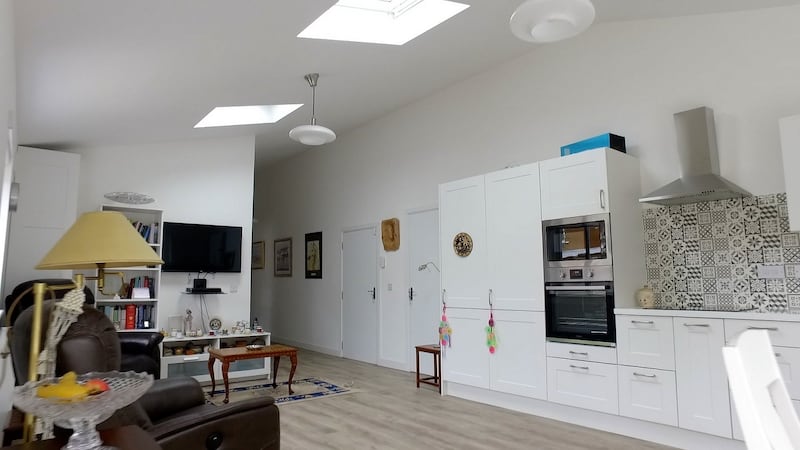


“My job is to keep them excited and to keep them abreast of what’s going on and we do a weekly family Whatsapp. We go looking at kitchens together, or I can show them samples,” says Ryan. After a three-month wait for planning permission, Anne Hughes’s 65sq m home took 12 weeks to complete.
Taking up residence in July 2020, meant “a new way of life,” says Anne. Comprising a bright, open-plan kitchen/living area, two bedrooms sharing a “Jack and Jill” wet room, and a guest toilet, the main advantage is ground-floor living.
“Micheál is not having to go up and down stairs and that is a huge relief. The two of us were in a four-bedroom house for a long time and it was mad,” Anne says. Such a living arrangement is not unusual; research by the Housing Agency among mature homeowners shows there are between 198,000 and 234,000 homes with two bedrooms not in regular use, and between 74,000 and 99,000 homes with three bedrooms which are not in regular use.
A big window to the front provides connection. “I see all the neighbours coming and going, which I never did before,” says Anne. “I can just stand at the dishwasher and put away the dishes to the left – there is no moving around. I didn’t want any curtains. I didn’t want anything to catch the dust, so we have electric blinds.”
A corridor running the length of the home has been an extra boon. “Micheál is able to walk that 20 minutes a day, which means he is safe not going out in the bad weather. I didn’t realise it would be so useful for walking.”
'Micheál loves to see the birds and we bought a little bird house to put in the window.'
The bigger bedroom to the rear has double doors overlooking a shared garden. “Micheál loves to see the birds and we bought a little bird house to put in the window.”
Importantly, the “dreaded ramp” is subtle, says Anne. “Ramps usually scream ‘old person’, like a lump of concrete thrown at the front door, but this I think is quite nice.”
All-in, the home cost €130,000 including VAT.
The two households are interconnected by a shared laundry room.
“We only see them when they make a point of coming to see us,” says Anne of her new neighbours. And she doesn’t have a bad word to say about them.
“It’s amazing. We are so lucky with our daughter-in-law Mary, she is just an angel, and of course Howard is too. They don’t come in much, maybe once a day to make sure we are still alive. And the kids come in, which is lovely. It’s lovely, just lovely, having them next door.”
She has no regrets. “Not a thing. I’m just relieved not to have the responsibility for that big house.”
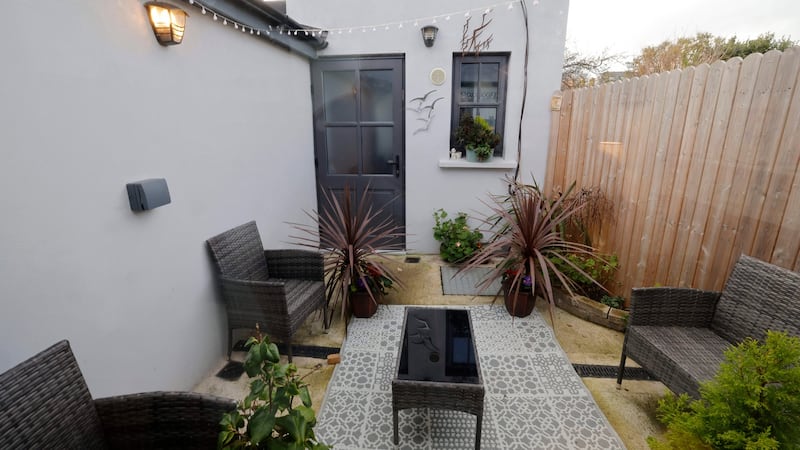
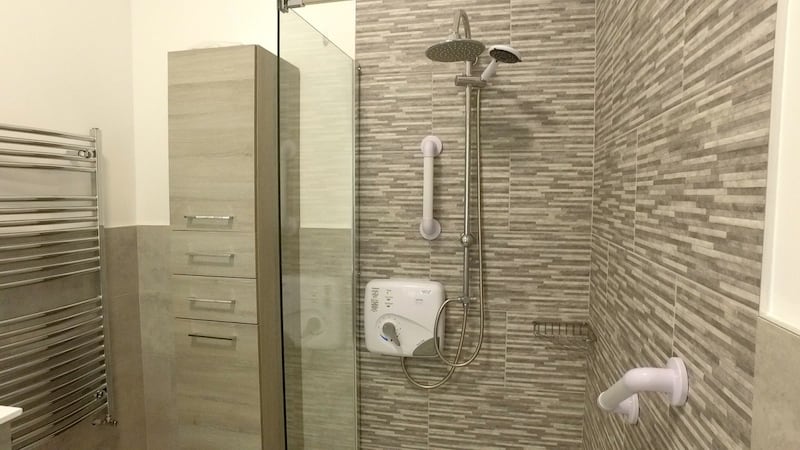
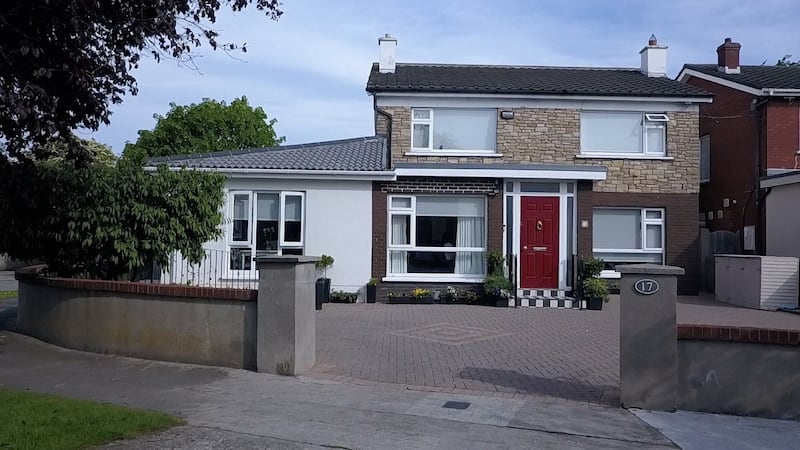
Recalling moving into the estate 40 years ago with two young children, she says house buyers should think ahead.
“It’s hard to tell that to anyone when they are young, but whatever house you buy, there should be potential to change it without too much trouble.”
Across the city, the Cuffe family in Clontarf have changed things up too. A rejig of daughter Moira’s family cottage to accommodate her mother Tess Cuffe has, brought more space and peace of mind for everyone. It all started with asking, “How can we make this better?” says Moira Cuffe.
“Mum lived about a mile and a half away. She’s 87 and she’s an insulin diabetic, so she has an alarm. We were doing two-hourly check-ins and if her phone didn’t pick up, we were down [to check],” says Moira, who is a nurse. She describes Tess as “fiercely independent”.
“We were conscious of her keeping her complete independence, but at the same time, having somebody right there if she needed it.”
In the mix were two homes and seven people. Moira loved her small and quirky cottage. “It’s a hundred years old, it was very makeshift, but we made it work for four children and two adults with lofts and different things up in the attic. But after 25 years, it needed work.”
With lots of memories and great neighbours, the family was keen to stay.
'Mum plays bridge a few times a week and she has more friends calling than I do. My family calls to see her, so I get to see them more too'
Tess had lived in her house for 25 years. “When my father passed away, she was in a big house on her own with a lot of rooms not being used. There were hedges and things needed doing,” Moira says. The family talked things out for a long time and ultimately Tess decided to move, but with one proviso. “Her only big worry was that she would invade our family life. That was the big thing and it remains a big thing for her. She is happy to be part of things going on, but for dinner time and evening time watching telly, she wanted her own space.”
Planning and space restrictions ruled out an interconnecting granny flat, or a separate structure in the garden. Instead, their architect re-imagined the cottage. Everyone decamped to live with Tess during the 10-month build, and so the Jenga began.
Tess’s house was sold, with handover timed for the completion of the cottage. Its sale allowed for buying an apartment for two college-going children to leave the nest, making space for granny.
“It freed up money, basically,” says Moira. “We were fortunate that it sold at a good price.”
The new group of five moved back into the remodeled cottage in March 2020, just before the pandemic.
'Mum wears an alarm and if it goes off now, I don't even worry. I can just walk in. Before it was into the car and drive down'
“Even though the house hasn’t changed really in terms of space, we actually feel like we’ve got a lot more space, because it’s headspace,” Moira says. “Mum wears an alarm and if it goes off now, I don’t even worry. I can just walk in. Before it was into the car and drive down.”
Two ground-floor bedrooms to the side of the cottage were repurposed to create Tess’s new home, comprising an open plan living area with French doors to a patio. A kitchen runs along the right-hand wall, with a dining area for when she has friends for dinner. A double bedroom ensuite is to the rear. A separate entrance wasn’t feasible, so the two households share a front door.
“There is a little knocker on her door. We always knock going in, but she is a huge part of our house,” says Moira. Meanwhile, the cottage has benefited from a new roof, improved insulation and a new home office upstairs.
“During the day when we are out at work, Mom is pottering away. She’ll do the washing, she’ll do my washing – I shouldn’t say that, but it’s very nice. If I’m here during the day, we’ll do it together or we’ll garden.”
The households do their own thing in the evening, with Tess enjoying the fringe benefit of Netflix and Amazon subscriptions.
“She likes her telly and if it breaks down, we can just pop in and fix it,” says Moira. “Mum plays bridge a few times a week and she has more friends calling than I do. My family calls to see her, so I get to see them more too.” She describes living with her mother as “a privilege”.
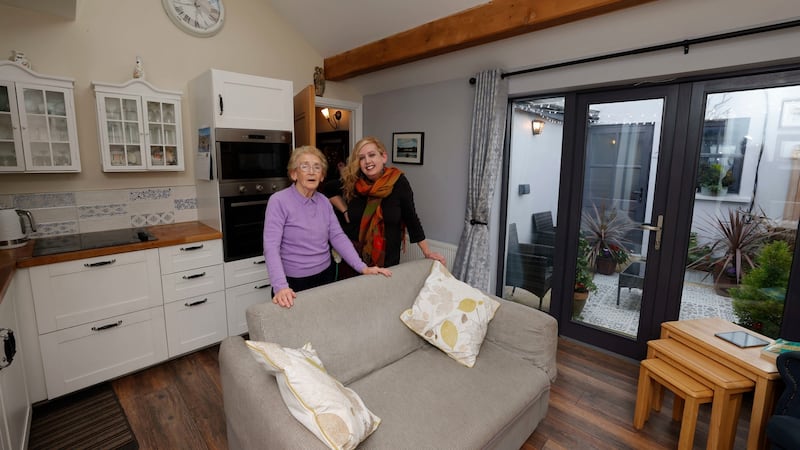
“The two in the apartment are just made up. They are getting their independence, they have to do their own washing and cleaning and pay their own bills with their part-time jobs,” she says. “The quality family time is amazing now, because they come home for dinner and they want to be there. Myself and my husband have more time to ourselves and for the other boys still here at home.”
The changed living arrangements are a “win, win, win”, Moira says. They were born of good communication.
“Our family had to sit down and talk about it and I needed my husband to really want this. It couldn’t have just been me, because it’s a big change. Mum is so good about the boundaries and she has made those boundaries.”












